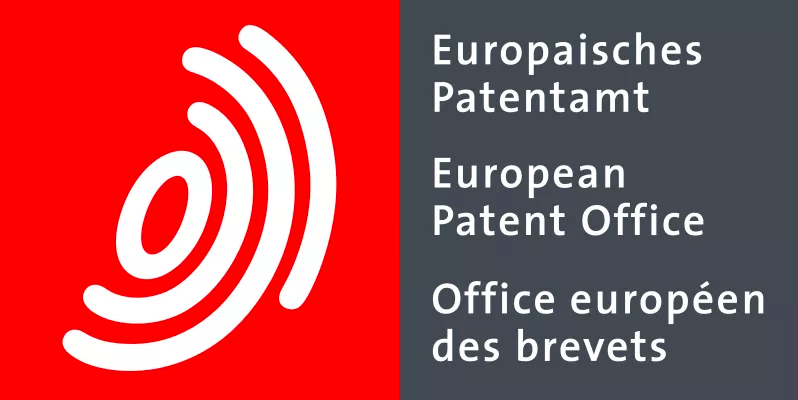
Mitra’s invention takes what was an emerging technology at the time – nanotechnology – and applies it to a new sector to provide a solution for dentists and relief for patients,
MUNICH (PRWEB)
May 04, 2021
The European Patent Office (EPO) announces that U.S.-based Chemist Sumita Mitra has been nominated as a finalist in the “Non-EPO countries” category of the European Inventor Award 2021. Mitra was the first to apply nanotechnology to the production of dental materials, leading to the creation of a new composite to repair teeth which has many advantages over conventional materials.
Mitra’s material overcomes many of the limitations of previous dental composites, which were either too weak to be used on biting surfaces, or quickly lost their polish and became physically unattractive. In addition, her invention is more versatile than other composites, meaning it can be used in any area of the mouth and simplifies the filling procedure for dentists. Commercialized as Filtek™ Supreme Universal Restorative since 2002 by 3M, the U.S. multinational for whom Mitra worked for more than 30 years, the technology and the products developed from it are today used by dentists around the globe.
“Mitra’s invention takes what was an emerging technology at the time – nanotechnology – and applies it to a new sector to provide a solution for dentists and relief for patients,” says EPO president António Campinos, announcing the European Inventor Award 2021 finalists. “Patents have protected Mitra’s material and helped ensure that her invention remains commercially successful nearly 20 years after its launch.”
The winners of the 2021 edition of the EPO’s annual innovation prize will be announced at a ceremony starting at 1:00 pm EDT (19:00 CEST) on June 17, which has this year been reimagined as a digital event for a global audience.
Making a new nanomaterial
Until the late 1990s, dentists wishing to perform natural-looking tooth repairs relied on a combination of two materials: composite microfills, which were aesthetically pleasing but too weak to be used in teeth towards the back of the mouth and biting surfaces; and stronger, but less attractive hybrid composites. A key problem was the size of the filler particles which are suspended in the resin to impart it with strength, color, and opacity. Traditionally, these fillers consisted of dense, large particles, such as quartz or glass, milled down into finer particles – but as the resin gradually wore away, these particles begin to protrude from the material or were plucked from its surface, resulting in bumps and craters which scattered light. The result was a filling which quickly lost its reflectivity and polish.
It was while working in the oral care division of U.S. multinational 3M that Sumita Mitra became aware of the limitations of existing composite materials. At the same time, nanotechnology was emerging as a field of research and Mitra decided to explore how these new developments could be applied to dentistry. She began working on nanotechnology-based solutions for a new dental material, driven by a desire to use her expertise in polymer chemistry and materials science to develop inventions that solve real-life problems for people.
Mitra’s idea was to replace composite fillers with nanoparticles – ultrafine particles measuring between 1 and 100 nanometres in diameter – which are smaller than the wavelength of visible light and do not therefore scatter it, resulting in a material which retains its shine. At first, Mitra and her team at 3M incorporated uniform nanoparticles measuring less than 20 nanometres in size (1 nm is a billionth of a meter) into resins, but although the materials they created were strong and attractive-looking, they were difficult to mould, making them unsuitable for dentistry.
She and the team therefore developed a technique for creating linked clusters of nanoparticles, which they called ‘nanoclusters’, combining these with single nanoparticle of varying diameters, resulting in a strong, durable and shiny material, with excellent handling properties. By adding tiny amounts of pigment, and altering the chemical composition of the nanoparticles, the team also created a range of different shades, which can be matched to individual patients’ teeth, and layered to create a more natural finish. “The use of nanotechnology gave me the opportunity of making a new material,” says Mitra. “It restores peoples smiles and improves the quality of their lives”.
Following the successful development process, Mitra worked closely with 3M’s patent attorneys to construct the patents to protect her ground-breaking work. Besides her contribution to the Filtek range, Mitra is named as inventor on 58 granted European patents for inventions that have resulted in various dental innovations including resin-modified glass ionomers and new adhesives which can be found in other 3M products. “The patent was essential for safeguarding the invention so that others could not infringe on the technology,” she says.
Lasting impact in dentistry innovation
The material based on Mitra’s work, Filtek™ Supreme Universal Restorative, was launched by 3M in 2002 and, although several new generations have been developed since, the current line of products is still based on Mitra’s European patents. 3M regards the material as unique because it combines durability with aesthetic qualities not reached by competitors’ products which rely on micro- or nano-hybrid fillers instead.
Mitra’s invention has contributed to the company being named as one of the top three manufacturers for the global composite filing in the dental restoration market in 2019. The material‘s strength is its versatility according to her: “You have all the desired properties of a tooth filling in one material. That is why this technology has been used to make so many different types of tooth restorations around the world.”
Although Mitra retired from 3M in 2010, the enduring success of her invention continues with Filtek products used in one billion tooth restorations worldwide by dentists to date. Today, she continues to contribute to research and development through her own consulting company. She also volunteers in her community and hopes to inspire young people to develop an interest in science.
About the inventor
Sumita Mitra is a partner at Mitra Chemical Consulting, LLC, a company she set up with her husband after leaving 3M in 2010, and which advises companies on new technology development, product design, commercialisation, mergers and acquisitions. She was named an American Chemical Society Hero of Chemistry in 2009, inducted into the US National Inventors Hall of Fame in 2018 and elected to the National Academy of Engineering in 2021 for her work related to inventions in nanotechnology for use in dental materials. Other awards include a Hollenback Memorial Prize from the Academy of Operative Dentistry (2020); a Peyton-Skinner Award for Innovation in Dental Materials from the International Association of Dental Research (2012); and a Top 25 Women in Dentistry Award (2010). Mitra was elected to the 3M Carlton Society 1998 – the highest 3M award given for lifelong contribution to R&D.
Sumita Mitra is named on 58 European patents, four of which are related to her nomination for the European Inventor Award 2021: EP1225867, EP1227782, EP1229886, EP1771143.
View the video and photo material for Sumita Mitra
About the European Inventor Award
The European Inventor Award is one of Europe’s most prestigious innovation prizes. Launched by the EPO in 2006, it honors individual inventors and teams of inventors whose pioneering inventions provide answers to some of the biggest challenges of our times. The finalists and winners are selected by an independent jury consisting of international authorities from the fields of business, politics, science, academia and research who examine the proposals for their contribution towards technical progress, social development, economic prosperity and job creation in Europe. The Award is conferred in five categories (Industry, Research, SMEs, Non-EPO countries and Lifetime achievement). The Award is conferred in five categories (Industry, Research, SMEs, Non-EPO countries and Lifetime achievement). In addition, the public selects the winner of the Popular Prize from among the 15 finalists through online voting.
About the EPO
With 6,400 staff, the European Patent Office (EPO) is one of the largest public service institutions in Europe. Headquartered in Munich with offices in Berlin, Brussels, The Hague and Vienna, the EPO was founded with the aim of strengthening co-operation on patents in Europe. Through the EPO’s centralised patent granting procedure, inventors are able to obtain high-quality patent protection in up to 44 countries, covering a market of some 700 million people. The EPO is also the world’s leading authority in patent information and patent searching.

